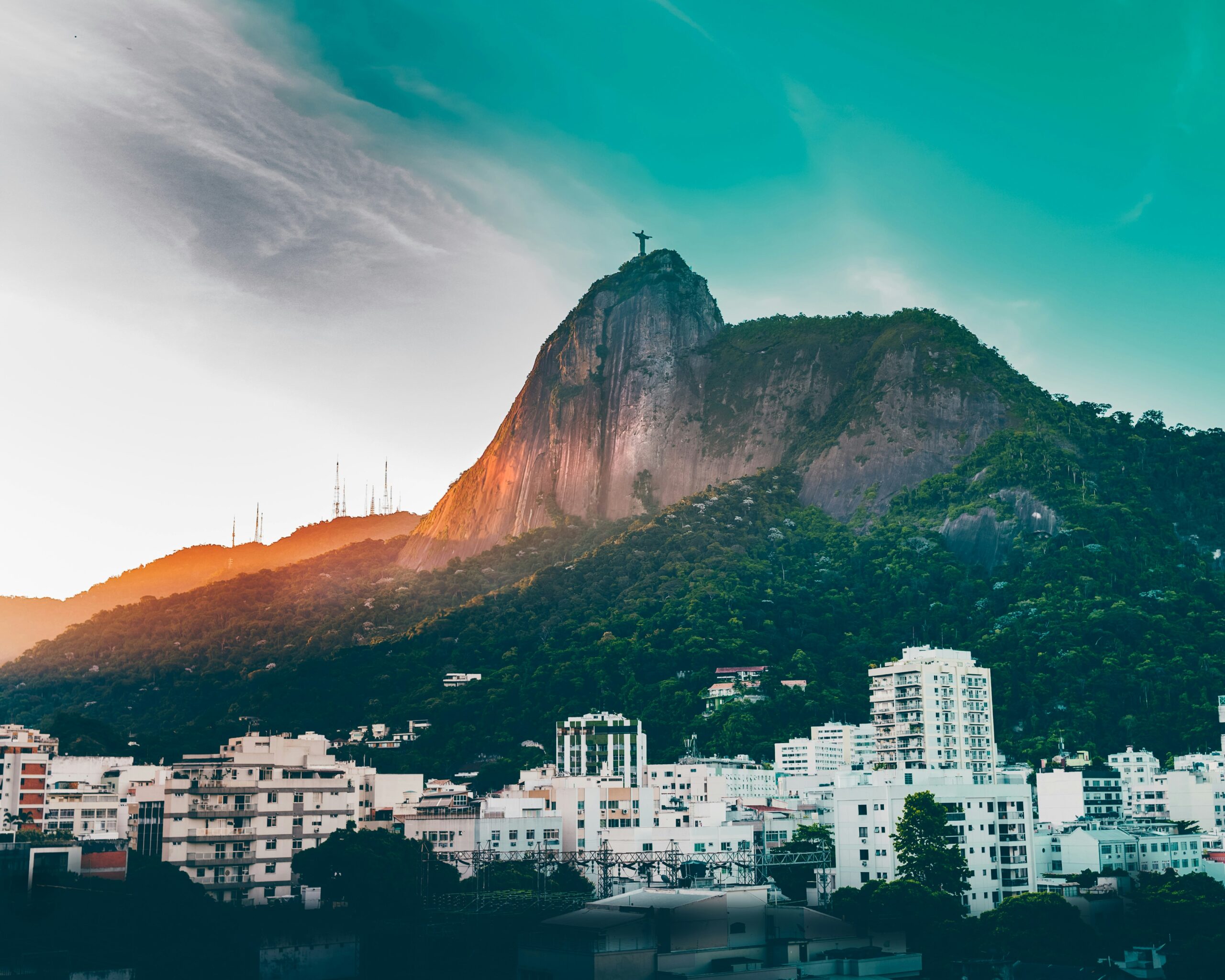Costa Rica, nestled between Nicaragua and Panama in Central America, is a land of unparalleled natural beauty and biodiversity. From its lush rainforests and pristine beaches to its majestic volcanoes and abundant wildlife, Costa Rica offers travelers a wealth of experiences. Explore the vast network of national parks and protected areas, zip-line through the canopy of the Monteverde Cloud Forest, or relax on the sun-kissed shores of the Nicoya Peninsula. With its commitment to sustainability and ecotourism, Costa Rica invites visitors to immerse themselves in its breathtaking landscapes and vibrant culture.
Ultimate Costa Rica Travel Guide
Destinations
Best time to go
The best time to visit Costa Rica is during the dry season, which typically runs from December to April. During this time, the weather is generally warm and sunny, with minimal rainfall, making it ideal for outdoor activities and beach vacations. Keep in mind that December to February is the peak tourist season, so expect larger crowds and higher prices. The wet season, from May to November, brings higher temperatures, increased humidity, and more frequent rainfall, but it also offers lush green landscapes and fewer tourists.
Average Temperature By Month
January: 27°C (81°F)
February: 27°C (81°F)
March: 28°C (82°F)
April: 28°C (82°F)
May: 27°C (81°F)
June: 27°C (81°F)
July: 26°C (79°F)
August: 26°C (79°F)
September: 26°C (79°F)
October: 26°C (79°F)
November: 26°C (79°F)
December: 26°C (79°F)
What To Expect
Time Zone:
Costa Rica operates on Central Standard Time (CST) year-round, which is 6 hours behind Coordinated Universal Time (UTC-6). However, Costa Rica does not observe daylight saving time.
Currency:
The official currency of Costa Rica is the Costa Rican Colón (CRC), but US dollars (USD) are widely accepted throughout the country. Credit cards are commonly used at hotels, restaurants, and tourist attractions, but it's advisable to carry cash for smaller purchases and when visiting rural areas.
Language:
Spanish is the official language of Costa Rica and is spoken by the majority of the population. English is also widely spoken, particularly in tourist areas and among those working in the tourism industry.
Airport:
Juan Santamaría International Airport (SJO) in Alajuela, near San José, is the main international airport serving Costa Rica. The airport offers connections to other Central American countries, as well as international flights to North America, Europe, and South America.
How To Get Around
Rental Cars: Renting a car is a popular way to explore Costa Rica independently, with well-maintained roads and relatively easy navigation. Several car rental agencies operate at the airport and in major towns.
Taxis: Taxis are readily available in Costa Rica and can be found at the airport, hotels, and tourist attractions. Fares are typically metered, but it’s advisable to confirm the fare with the driver before starting your journey.
Public Transportation: Costa Rica has an extensive public bus network that provides transportation between towns and cities. Additionally, private shuttles and tourist vans are commonly used for travel between popular tourist destinations.
Average Temperature By Month:
January: 27°C (81°F)
February: 27°C (81°F)
March: 28°C (82°F)
April: 28°C (82°F)
May: 27°C (81°F)
June: 27°C (81°F)
July: 26°C (79°F)
August: 26°C (79°F)
September: 26°C (79°F)
October: 26°C (79°F)
November: 26°C (79°F)
December: 26°C (79°F)
Plugs:
The standard voltage in Costa Rica is 120 volts AC, with a frequency of 60Hz. The most commonly used plug types are Type A and Type B, with two flat parallel pins. It's advisable to bring a universal adapter if your devices have different plug types.
VPN:
Access to certain websites and online services may be restricted in Costa Rica. Consider using a virtual private network (VPN) to securely access the internet and bypass any censorship restrictions.
Safety:
Costa Rica is generally a safe destination for travelers, but it's essential to take standard precautions to ensure your safety and well-being during your visit. Be mindful of your belongings, particularly in crowded tourist areas and when using public transportation. Avoid walking alone in isolated or poorly lit areas at night, and be cautious when withdrawing money from ATMs. Additionally, follow local laws and regulations, respect cultural customs, and be aware of your surroundings.
Credit Cards and Banks
Credit Cards:
Credit card acceptance in Costa Rica is widespread, especially in urban areas, tourist destinations, hotels, restaurants, and larger shops. Visa and MasterCard are the most commonly accepted cards, followed by American Express and Discover. Contactless payments, including Apple Pay and Google Pay, are also becoming increasingly common.
Debit Cards:
Debit cards are widely used in Costa Rica for ATM withdrawals and some purchases. Most banks issue debit cards that can be used domestically and internationally. Make sure to inform your bank of your travel plans to avoid any issues with card usage abroad.
ATMs:
ATMs are readily available in cities, towns, and tourist areas throughout Costa Rica, allowing you to withdraw Costa Rican Colones (CRC). Most ATMs accept international cards, but it’s advisable to use ATMs located inside banks or major shopping centers for security. Some ATMs may have withdrawal limits, so plan accordingly.
Currency Exchange:
The official currency of Costa Rica is the Costa Rican Colon (CRC). It’s recommended to exchange your currency to Costa Rican Colones upon arrival in Costa Rica. You can exchange major foreign currencies at banks, currency exchange booths, and some hotels. US dollars are widely accepted for exchange, especially in tourist areas.
Banks:
Major banks in Costa Rica include:
- Banco Nacional de Costa Rica (BNCR): One of the largest banks in Costa Rica, BNCR offers a range of banking services including savings accounts, loans, and foreign exchange.
- Banco de Costa Rica (BCR): Another prominent bank in Costa Rica, BCR provides various banking products and services for individuals and businesses.
Traveler’s Checks:
Traveler’s checks are becoming less common worldwide, and their usage is limited in Costa Rica. It’s recommended to carry cash or use alternative payment methods such as credit/debit cards or ATMs for transactions. However, some banks may still offer services for cashing traveler’s checks, albeit with a fee.
Tips for Banking in Costa Rica:
- Notify your bank before traveling to Costa Rica to inform them of your travel plans and avoid any issues with card usage abroad.
- Keep your PIN and card information secure, and be cautious when using ATMs, especially in secluded areas or at night.
- Familiarize yourself with the current exchange rate to ensure fair transactions when exchanging currency.
- Carry small denominations of Costa Rican Colones for smaller purchases, as change may be limited.
By understanding the banking system in Costa Rica, you can ensure a smooth and hassle-free financial experience during your travels in the country.
Locations
Costa Rica
TRAVEL FACTS
US State Dept Travel Advisory
The US Department of State currently recommends US citizens exercise increased caution in Costa Rica due to crime.
https://travel.state.gov/content/travel/en/traveladvisories/traveladvisories.html
Passport/Visa Requirements
For the latest passport and visa requirements for this country, please consult the U.S. State Department’s “Learn About Your Destination” search tool, available through the link below.
US Embassy/Consulate
[506] 2519-2000; US Embassy in San Jose, Calle 98 Vía 104, Pavas, San José, Costa Rica; https://cr.usembassy.gov/; acssanjose@state.gov
LGBTQIA+ Travelers
Telephone Code
506
Local Emergency Phone
911
Vaccinations
The CDC and WHO recommend the following vaccinations for Costa Rica: hepatitis A, hepatitis B, typhoid, yellow fever, rabies, meningitis, polio, measles, mumps and rubella (MMR), Tdap (tetanus, diphtheria and pertussis), chickenpox, shingles, pneumonia, influenza, and COVID-19.
Climate
Tropical and subtropical; dry season (December to April); rainy season (May to November); cooler in highlands
Currency (Code)
Costa Rican colones (CRC)
Electricity/Voltage/Plug Type(s)
120 V / 60 Hz / plug types(s): A, B


Major Languages
Spanish, English
Major Religions
Roman Catholic, Evangelical and Pentecostal, other Protestant, Jehovah’s Witness
Time Difference
UTC-6 (1 hour behind Washington, DC, during Standard Time)
Potable Water
Opt for bottled water
International Driving Permit
Suggested; additionally, if you plan to drive in Costa Rica, you will need an Inter-American Driving Permit issued by the AAA
Road Driving Side
Right
Tourist Destinations
Manuel Antonio National Park; Poas Volcano National Park; Arenal Volcano National Park; Monteverde and the Cloud Forests; Cocos Island; Tamarindo; Mal Pais and Santa Teresa; Tortuguero National Park
Major Sports
Soccer, basketball
Cultural Practices
Costa Ricans are incredibly polite and courteous; therefore, shouting, confrontation and accusations are not considered to be acceptable behavior, especially in public.
Tipping Guidelines
Many restaurants will add a 10% service charge to the bill. If the service was good, you may leave a little extra for the server. It is standard to leave 500 CR (or $1 USD) per drink at bars. Tip tour guides between $10-15 (USD) per person depending on the size of the tour. Give $1-5 (USD) for taxi drivers depending on the distance. Round up for shorter distances. It is considerate to tip bellhops $1 (USD) per bag and leave $2 (USD) per day for housekeeping.
Souvenirs
Coffee, hammocks, ceramic and wood bowls, wooden macaw statues and other carved items, leather rocking chairs, handmade earrings and threaded necklaces
Traditional Cuisine
Gallo Pinto — kidney or black beans or pigeon peas and rice cooked together and mixed with Lizano sauce; often served as breakfast
Please visit the following links to find further information about your desired destination.
World Health Organization (WHO) – To learn what vaccines and health precautions to take while visiting your destination.
US State Dept Travel Information – Overall information about foreign travel for US citizens.
To obtain an international driving permit (IDP). Only two organizations in the US issue IDPs:
American Automobile Association (AAA) and American Automobile Touring Alliance (AATA)
How to get help in an emergency?
Contact the nearest US embassy or consulate, or call one of these numbers:
from the US or Canada – 1-888-407-4747 or from Overseas – +1 202-501-4444
Central Intelligence Agency.
The World Factbook.
/the-world-factbook
(May 8, 2024)



